Copyright © 2025 Motivate Media Group. All rights reserved.
The first solo show of artist Jordan Nassar showcases his reinterpretation of traditional Palestinian craft
Nassar's work explores the traditional cross-stitching technique called Tatreez
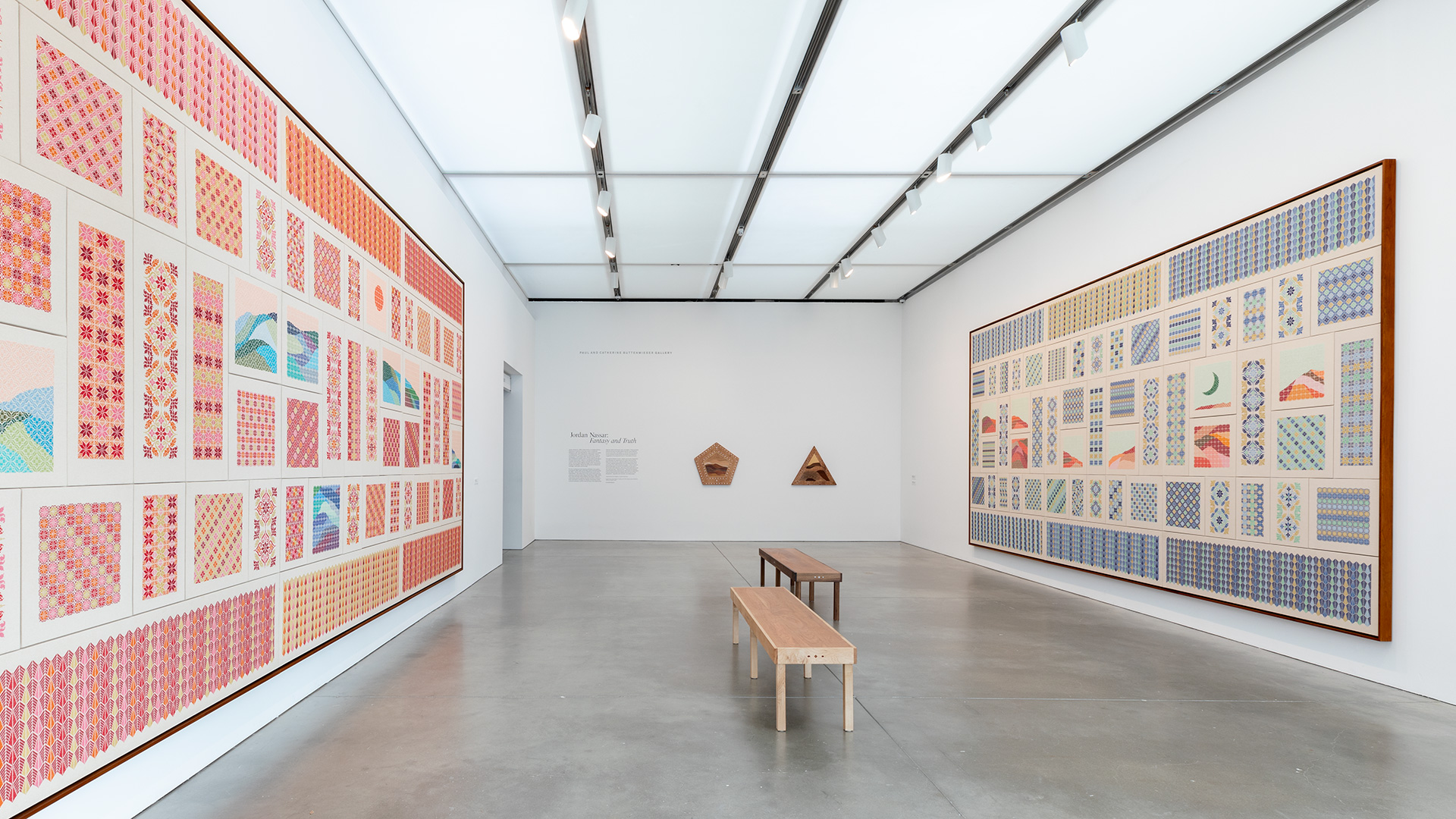
Some encounters have a long-lasting impact on a creative journey. This was the case for self-taught artist Jordan Nassar. Born in 1985 of Palestinian descent, Nassar grew up in New York City – where he is currently based – and was surrounded in his household by the motif of Tatreez, a matrilineal tradition of cross-stitching, which is deeply rooted in the history and culture of Palestine. Traditionally, the wearer’s social and familial status, as well as their different stages of life, could be identified through the colours, patterns and designs of the Tatreez.
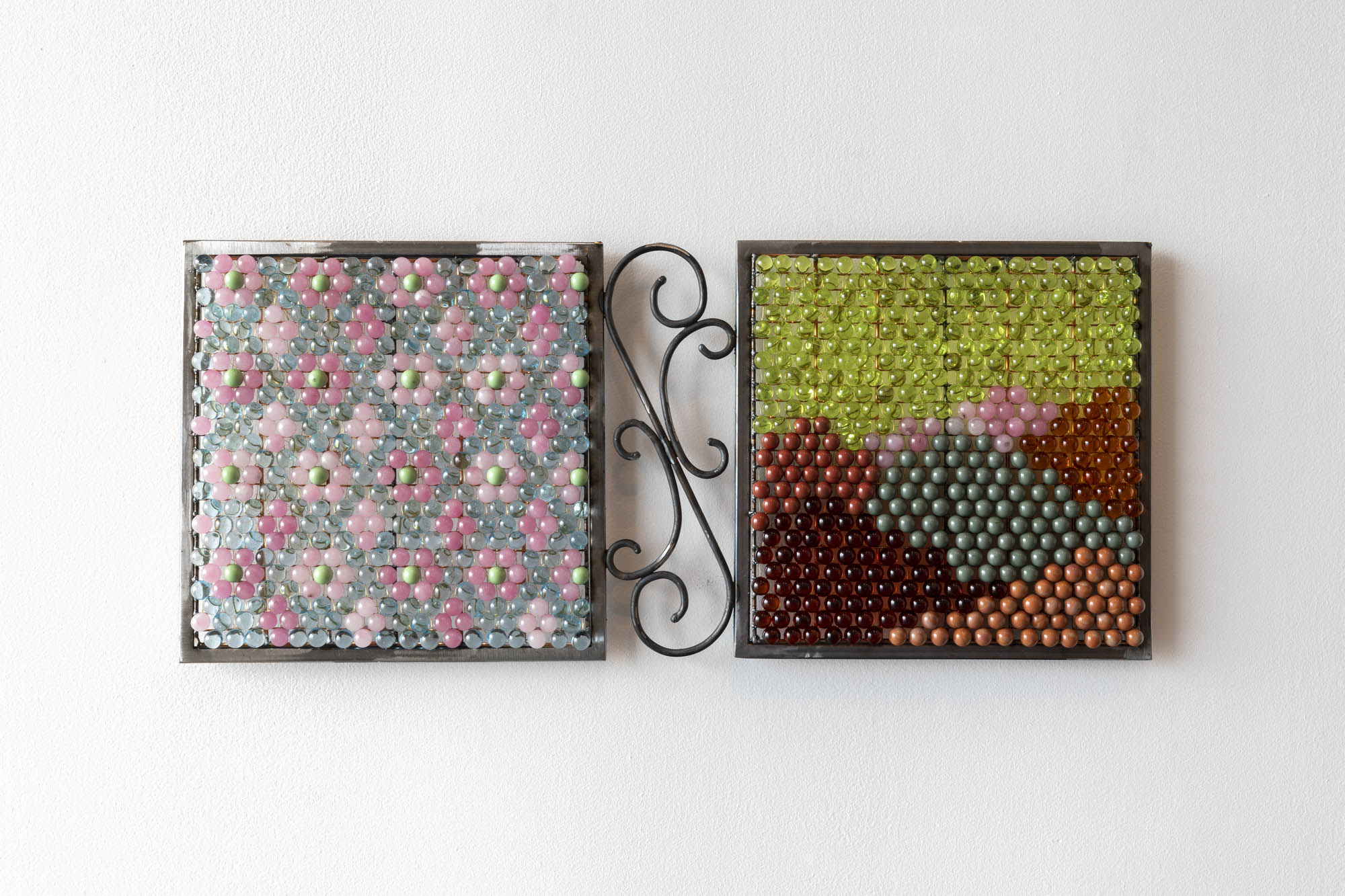
Connected to the ideas of nostalgia, nationality and heritage since the end of the 1940s, these motifs have been part of Nassar’s work since his meeting with women-led embroidery collectives across Ramallah, Hebron and Bethlehem; collectives whom he now collaborates with.
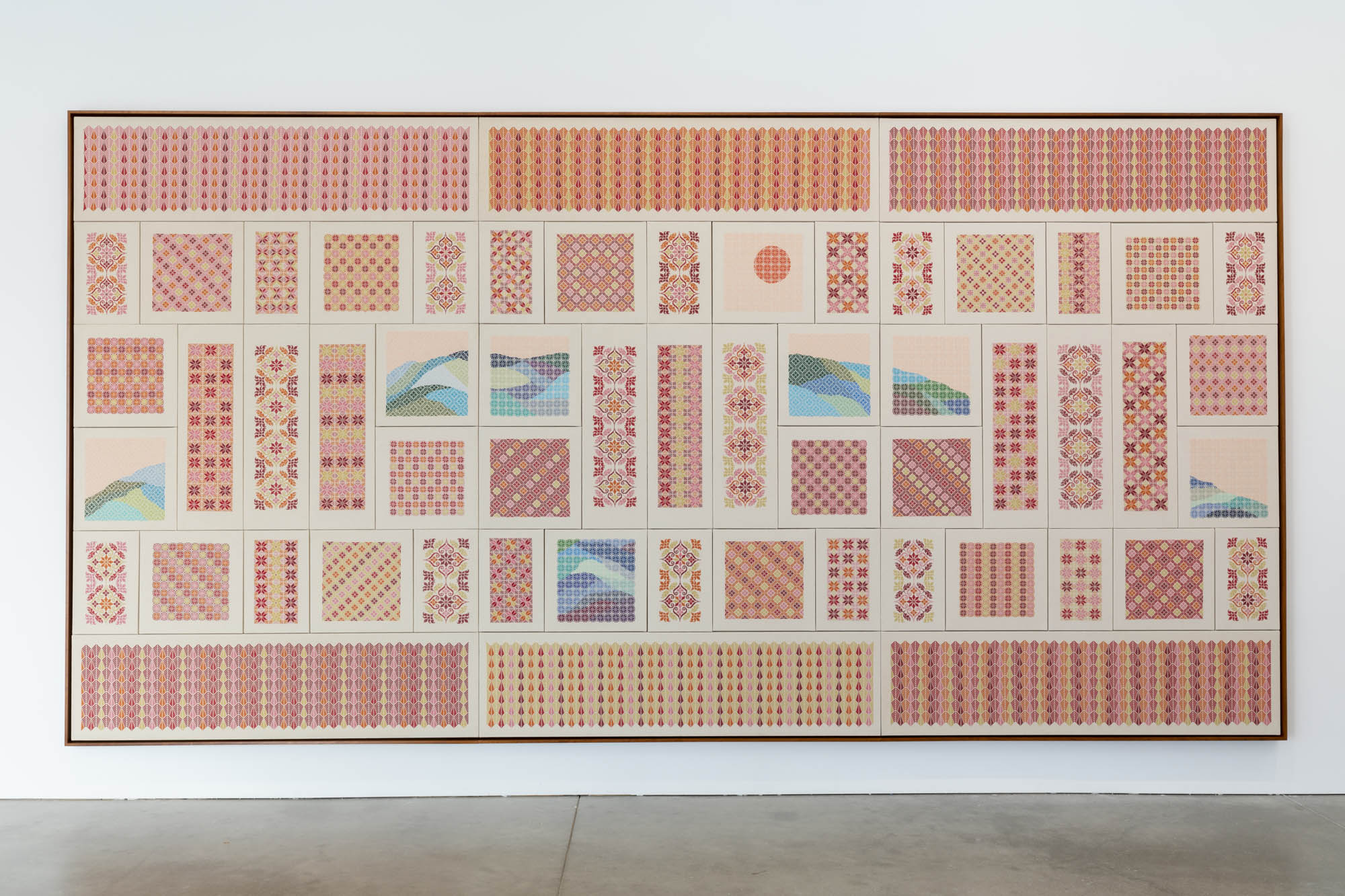
The artist’s first solo show – on view at the Institute of Contemporary Art, Boston until 29 January 2023 – features embroidered works on a monumental scale (as well as recent creations in wood and glass mixed media).
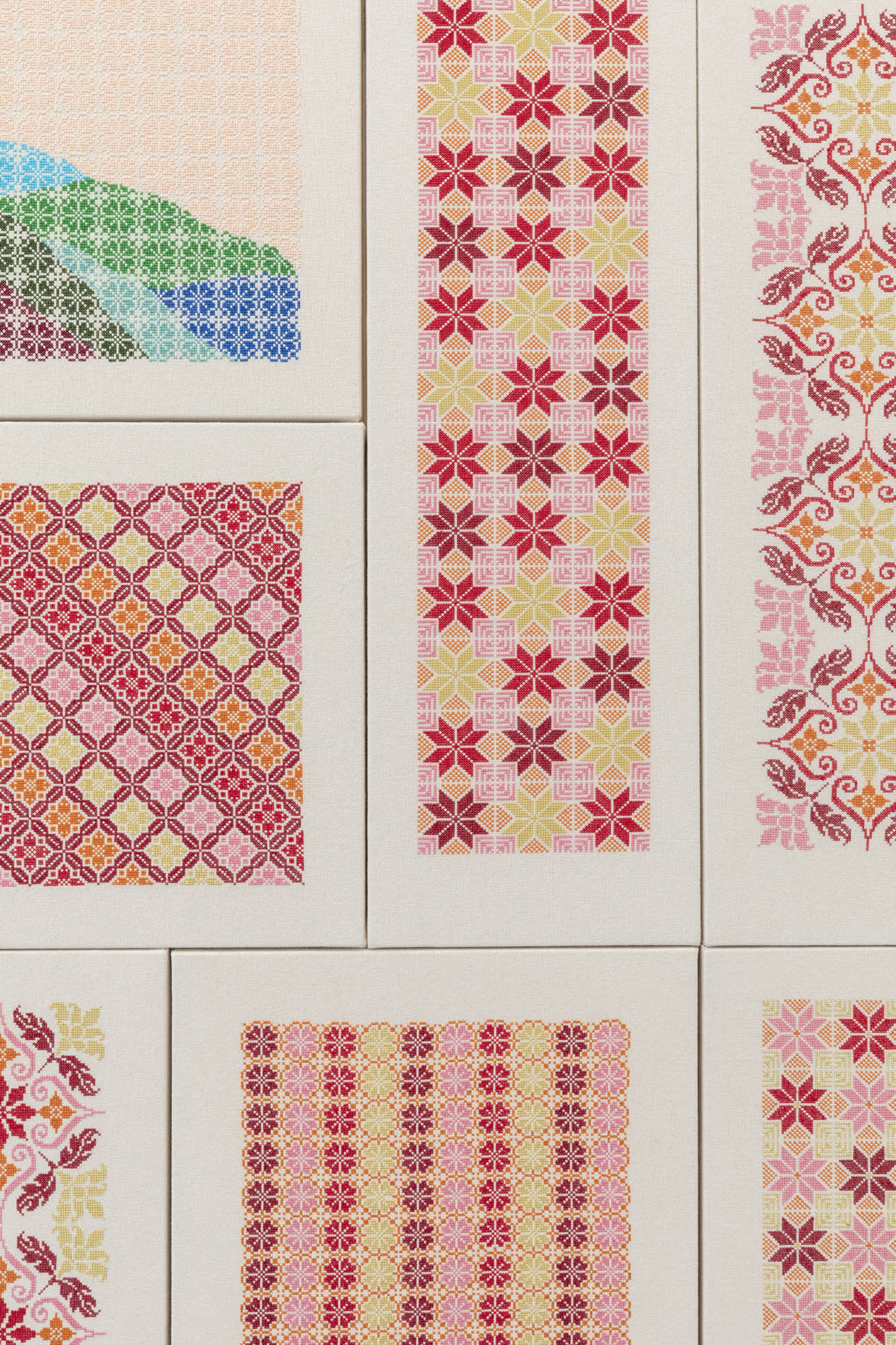
Represented by James Cohan Gallery in New York, Anat Ebgi Gallery in Los Angeles and The Third Line in Dubai, Nassar reinterprets a key aspect of his culture in his own way. The result is visually subtle yet powerful, captivating yet mysterious, rhythmic yet harmonious.
“Nassar’s work, with its complex patterning and painterly attention to form and colour, elevates our understanding of craft traditions as long-standing and deeply meaningful forms of art,” says curatorial assistant Anni Pullagura.
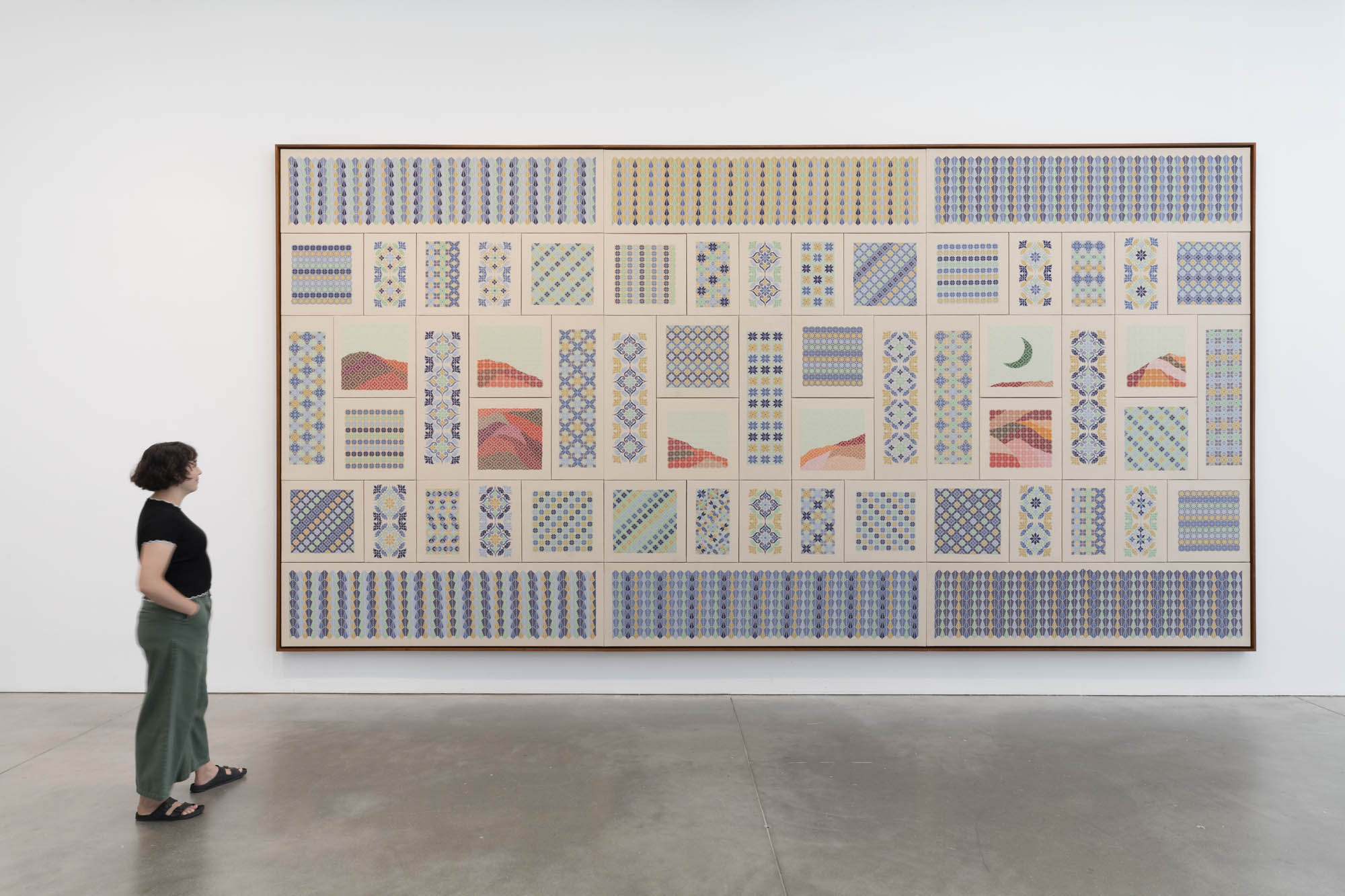
Titled ‘Fantasy and Truth’ in reference to the melancholic poetry collection A Tear and a Smile (1914) by Lebanese writer Gibran Khalil Gibran (1883-1931), the show comprises Nassar’s largest works to date. Each made of 57 individual panels in a variety of warm and cool colours, sizes and shapes, ‘Song of the Flowers’ and ‘Lament of the Field’ abstractly and geometrically evoke a sun rising over a blue mountain and a moon shining across a red valley.

Through his mesmerising artworks made in collaboration with a Palestinian embroidery collective based in the West Bank, Nassar explores what home, land and memory mean and represent – especially in one’s imagination.

“I like to discuss these landscapes as versions of Palestine as they exist in the minds of the diaspora who have never been there and can never go there,” says Nassar. “They are the Palestine I heard stories about growing up, half-made of imagination. They are dreamlands and utopias that are colourful and fantastical – beautiful and romantic, but bittersweet.”
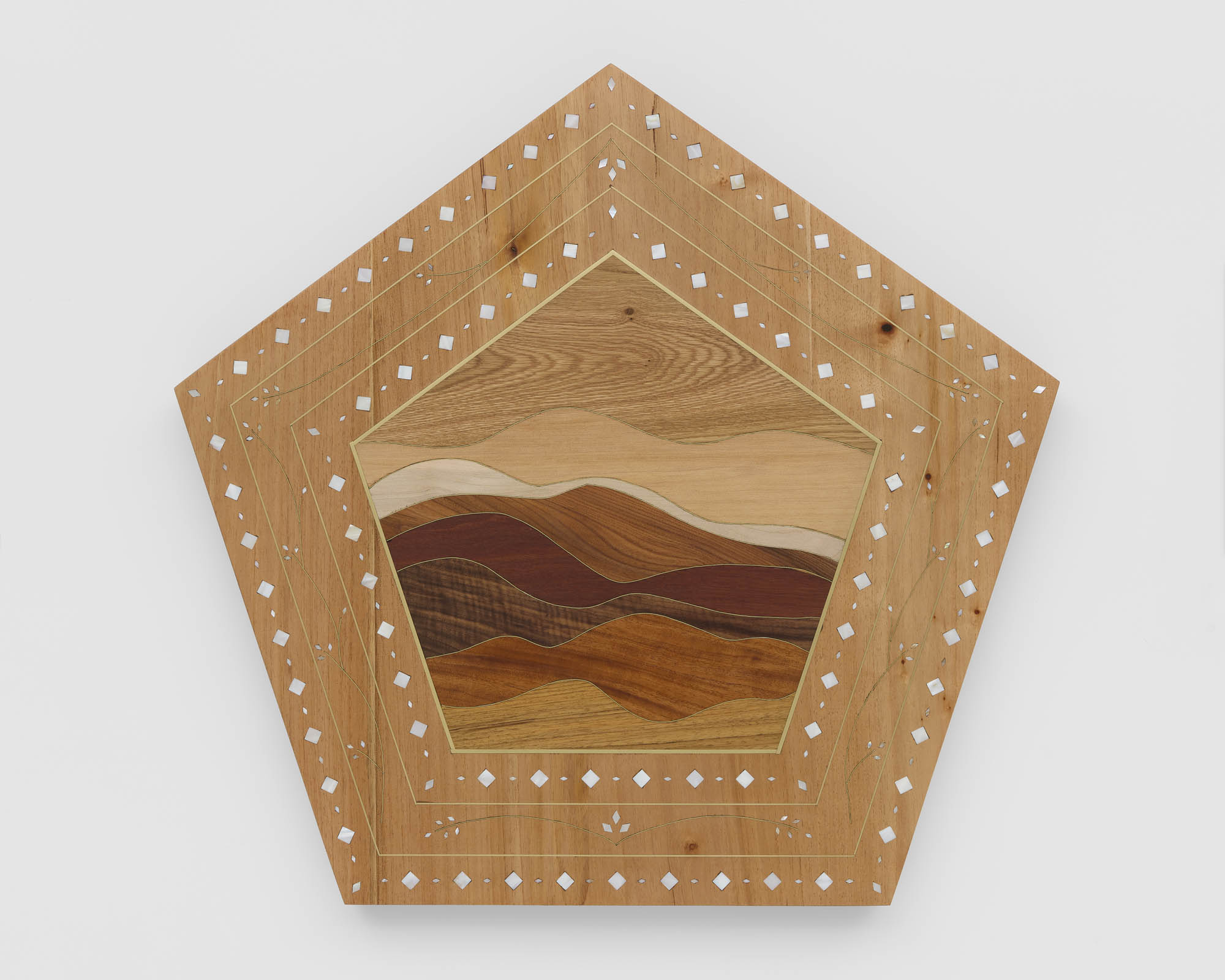
Interested in starting conversations through his art, Nassar has developed a rich visual language that goes beyond aesthetics to tackle the complexity of reality and identity.
The Latest
Design Take: Inside the Royal Suite at Jumeirah Al Naseem
With sweeping views of the ocean and Burj Al Arab, this two bedroom royal suite offers a lush stay.
Elevated Living
Designed by La Bottega Interiors, this penthouse at the Delano Dubai echoes soft minimalism
Quiet Luxury
Studio SuCo transforms a villa in Dubailand into a refined home
Contrasting Textures
Located in Al Barari and designed by BONE Studio, this home provides both openness and intimacy through the unique use of materials
Stillness, Form and Function
Yasmin Farahmandy of Y Design Interior has designed a home for a creative from the film industry
From Private to Public
How ELE Interior is reshaping hospitality and commercial spaces around the world – while staying unmistakably itself
A collaborative design journey
A Life By Design (ALBD) Group and Condor Developers have collaborated on some standout spaces in Dubai
New Episode: In Design With: Ahmed Bukhash
Watch the latest episode on In Design With.
Highlights of the Biennale Architettura 2025
We shine a light on the pavilions from the Arab world at the Venice Architecture Biennale, on display until Sunday 23 November 2025
Read ‘Bold Design’ – Note from the editor – July/August 2025
Read identity magazine's July/August 2025 edition on ISSUU or grab your copy at the newsstands.
Things to Covet
Elevate your spaces with a pop of colour through these unique pieces
Designing Spaces with Purpose and Passion
We interview Andrea Savage from A Life By Design – Living & Branding on creating aesthetically beautiful and deeply functional spaces
















